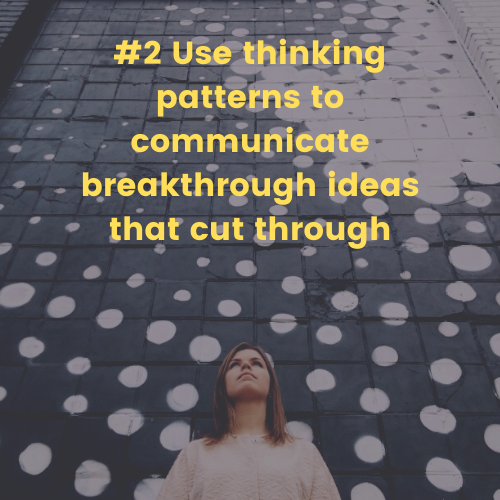#3 – How to stop your audience's eyes glazing over
Three ways experts unwittingly encourage their audiences to switch off
When we must read something that is poorly crafted, one of two things happens: we very quickly switch off and stop trying or we work extra hard to make sense of it.
In my experience, busy executives switch off surprisingly quickly unless they know something is critically important.
So, it’s worth taking a step back to understand what we should avoid if we want anyone important, be they a leader, a customer or a colleague to read and respond to our communication.
Here are three of the most common communication traps I see, all of which make the audience work harder than they want to, lead to ambiguity and a risk that your message won't cut through.
- Including everything we know about the subject
- Asking our audience to journey through our analysis
- Recording our ideas as they occur to us
Let’s now look in more depth at each of these elements.
1. Including everything we know about the subject
Another approach I see quite often is to create a ‘kitchen sink' communication, which I sometimes also call a ‘nervous parade of knowledge'.
I have seen many people put everything they know about a topic onto paper to make sure they don’t leave anything out.
This usually occurs when someone knows a lot about their subject but not enough about why they need to communicate about it.
However, this creates a problem both for the audience and the communicator.
It is safe to assume that most of the people receiving our communication are intelligent and in a hurry.
They want us to have a point of view and get to it quickly: they are not there to read for pleasure and do not want to work too hard to find your key ideas.
It is also safe to assume that we want to position ourselves as someone equally intelligent who values our time enough to get to the point quickly.
2. Asking our audience to journey through our analysis
It is very tempting – and we see people do this a lot – to take our audience on the same journey we took through our analysis, by giving a blow-by-blow description of every twist and turn in our problem-solving journey.
Clients tell me this is important as they realise they came to their conclusion at the end of this journey, and so assume their reader will want to do likewise.
This would be appropriate if you were recounting a holiday, but less so if your intention is to convey the significance of your work rather than the work itself.
3. Recording our ideas as they occur to us
It is also tempting to take our audience on a stream of consciousness journey, explaining one part of the story and then leaping to another as ideas occur to us.
Or, worse from a work perspective, as a magical mystery novelist might.
Their goal is to entertain and distract us as a form of pleasure.
Unfortunately, our work audiences do not sign up to go on a magical journey through our analysis, while we jump from one idea to the next until the ‘aha’ moment emerges right at the end.
Having now given you some ideas on how to create your communication, let me move on to how to collaborate with others while doing so.
In Tip #4 I offer some ideas that will help you manage your working process so you get faster approvals.
This is particularly important when we need to manage a group of stakeholders before ‘nailing down' our messaging.
You can navigate to Tip #4 using the menu below.
Talk soon,
Davina
Next step - Learn more about the So What Strategy
This short and powerful book provides a go-to strategy to help you clarify your thinking so you can communicate complex messages clearly. The So What Strategy framework has been tested on thousands of professionals and is proven to be suited to the vast majority of professional communication settings.

This Tip was prepared by Davina Stanley, founder of The Clarity First Program and author of The So What Strategy.
Davina has been helping experts communicate complex ideas for more than 20 years.
She began this work when a Communication specialist at McKinsey & Company and has since helped experts of all kinds strengthen their communication skills.
She lives in Sydney Australia, having previously lived and worked in Hong Kong, Tokyo and New York.




